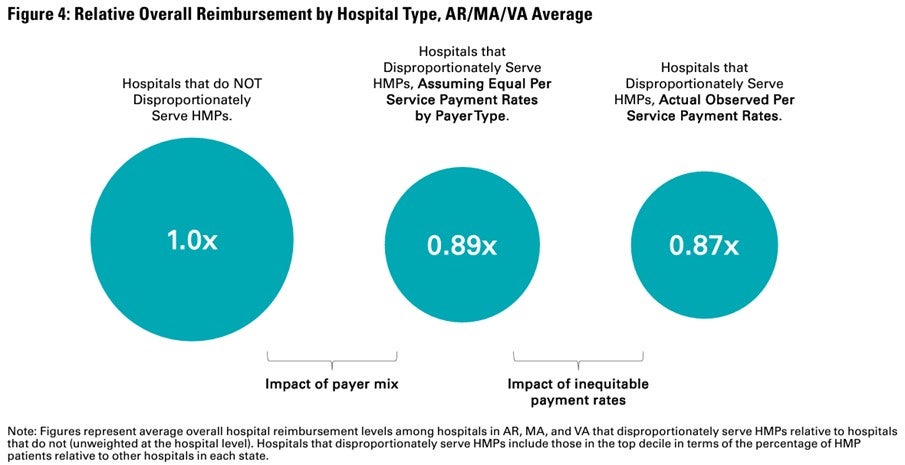Do Providers That Serve Historically Marginalized Populations Get Paid Less? New Manatt Study
This is an excerpt of a recent Manatt report supported by Arnold Ventures. Click here to read the full report and findings.
Our analysis found that hospitals disproportionately serving historically marginalized populations (HMPs) faced financial payment disparities not experienced by other hospitals, a result of both greater reliance on Medicaid reimbursements and less favorable commercial payment rates.
Across the three states examined as part of this analysis (Arkansas, Massachusetts, and Virginia), hospitals that disproportionately served HMPs disproportionately relied on lower-rate Medicaid reimbursements. Consistent with prior research, payer mix is a significant driver of financial inequality for hospitals that disproportionately serve HMPs. When looking only at the impact of payer mix and not accounting for negotiated rate differences, hospitals that disproportionately served HMPs received 89% of the overall reimbursement as other hospitals.
Payer mix is not the only source of financial disadvantage for these hospitals. This analysis adds to the current literature by also providing evidence that hospitals that disproportionately served HMPs received lower commercial payment rates than hospitals that served higher proportions of White individuals for the same services. Not only do they have fewer commercial patients, but they also get lower reimbursement for the commercial patients that they do see.
Together, a disproportionate reliance on Medicaid as a payer and lower payment rates for commercially insured patients contributed to hospitals disproportionately serving HMPs receiving lower overall levels of reimbursement. On average across our three states of focus, hospitals disproportionately serving HMPs received 87% of the overall reimbursement as other hospitals when accounting for both these hospitals’ payer mix and lower commercial payment rates.
Lower overall reimbursement can have wide-ranging implications for hospital financial sustainability and, by extension, access to and quality of care.
In addition to in-depth data analysis, our paper also offers a roadmap for states to assess payment inequities locally and policy options to mitigate payment disparities.

Click here to read the full article and findings.
